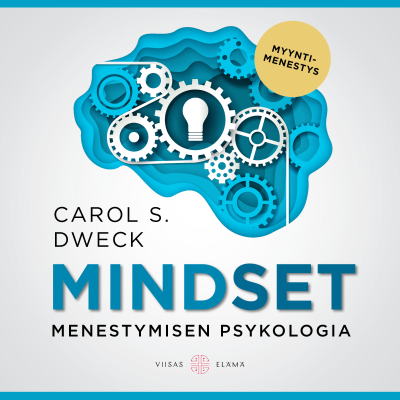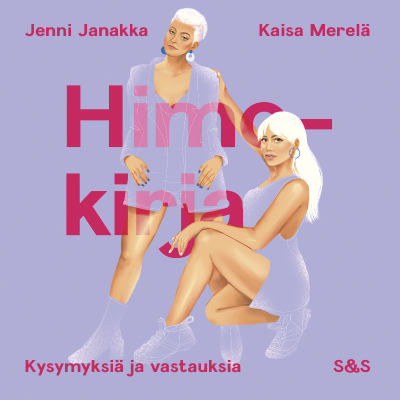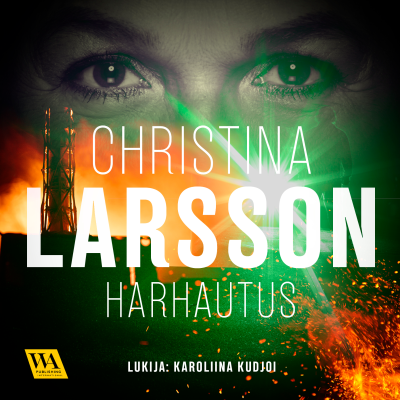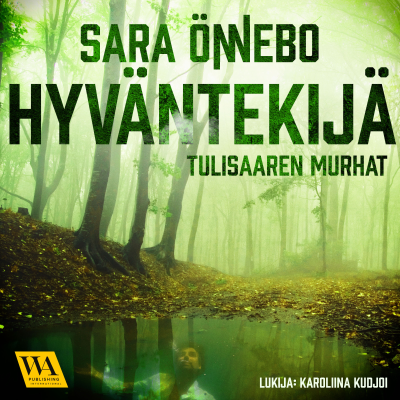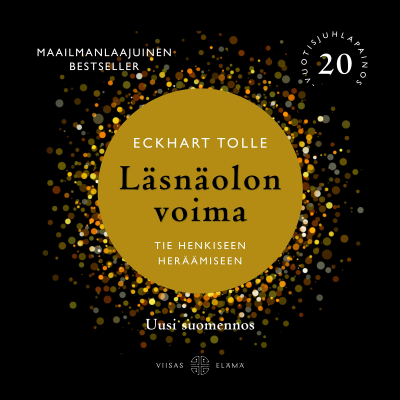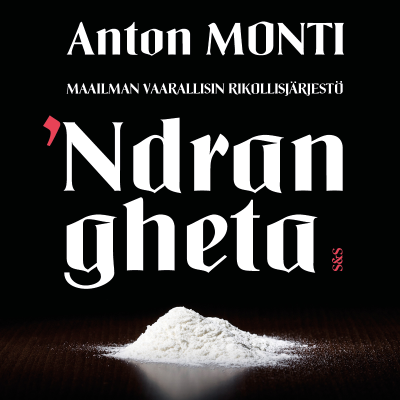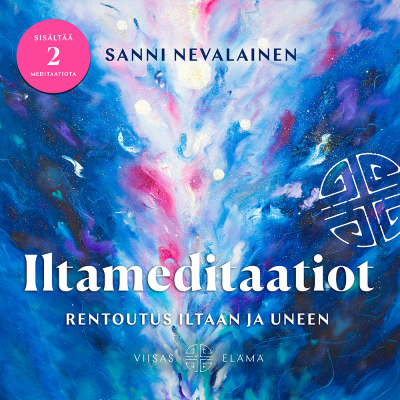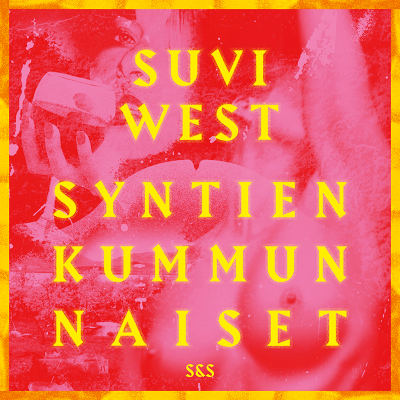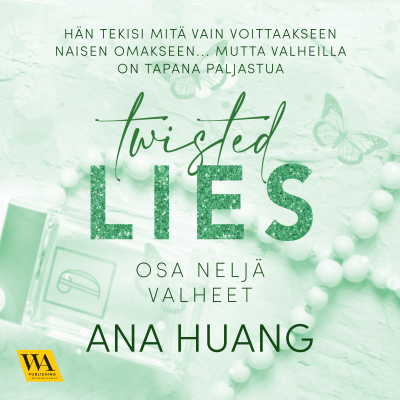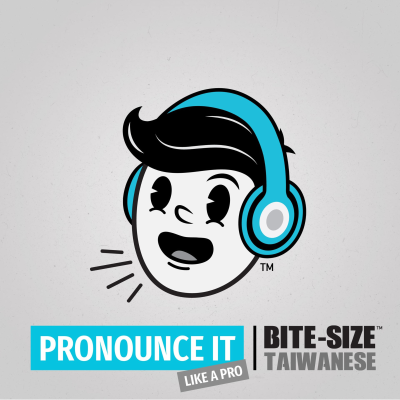
Bite-size Taiwanese | Pronounce it Like a Pro
Podcast by Bite-size Taiwanese
Bite-size Taiwanese is a podcast giving you a taste of real, everyday Taiwanese. Co-hosts Phil & Alan will guide you through the ins and outs of the Taiwanese language (Southern Min/Hokkien) with light-hearted, fun (and occasionally funny) conversations on how it’s used in Taiwan. Pronounce it like a Pro is a 10-episode series geared towards improving Taiwanese pronunciation focusing on common problem areas for English speakers. Try our other podcasts too: Bite-size | Newbie, Bite-size | Elementary
7 vrk ilmainen kokeilu
Kokeilun jälkeen 19,99 € / kuukausi.Peru milloin tahansa.
Kaikki jaksot
39 jaksotIn this episode, we’ve talked about Taiwanese dialects, regional differences, and a bit on Taiwan’s early immigrants and development. Please visit the episode webpage [https://bitesizetaiwanese.com/ep10-dialects-accents/] for a detailed outline of the episode! See omnystudio.com/listener [https://omnystudio.com/listener] for privacy information.
In this episode, we’ve talked about cooking, the recipe for scallion pancakes, and one of the uses of “hōo” in Taiwanese. (These show notes use tables and rich formatting. Please visit the episode webpage for an optimal viewing experience.) TAIWANESE ENGLISH iā-tshī-á night market tshài-tshī-á traditional market si̍t-phóo recipe tshang-á-piánn scallion pancakes tsâi-liāu ingredients kin a Taiwanese catty, about 600grams or 1 ⅓ pounds tsi̍t kin mī-hún one catty of wheat flour kong-kin kilogram kong-khik grams sì hun tsi sann ¾ sann hun tsi it ⅓ tsi̍t pé tshang-á a bunch of scallions nn̄g pah sì-tsa̍p cc ê sio-tsuí 240cc of hot water cc cubic centimeters (= milliliters, mL) Pronunciation note: pronounced as “sí1-si1” puànn pue líng-tsuí half a cup of cold water khok-á round or square containers, like a cup without a handle or a box without a lid, often used to ladle out or measure something, or to contain something temporarily; “khok” can also be used as a measure word like a “cup” of or a “ladle” of liōng-kî-iok-á approximate, as appropriate, according to taste iû liōng-kî-iok-á cooking oil as appropriate iâm liōng-kî-iok-á salt according to taste kóo-tsá-bī traditional taste; old-school ti-iû lard mī-tshè (wheat flour) dough kiáu to mix in or stir in an ingredient tsiâu-ûn even; continuously, regularly, evenly khiū chewy, rubbery nuá to knead khàm to cover gíng to grind with a mortar and pestle; to roll flat with a rolling pin so to rub on or to smear on; to roll the dough by using the palms of your hands tshiat to cut suah to sprinkle seasonings hiù to fling or throw, or spray a liquid hiù phang-tsuí to spray perfume kauh to roll up or wrap something with a filling; a wrap lūn-piánn / lūn-piánn-kauh fresh spring rolls kńg to roll up onto itself or to roll up with something inside tsian to pan-fry tshiah-tshiah (pan-fried food) to be golden brown *Syllables that have been greyed out require a tone change RECIPE: SCALLION PANCAKES Tsò tshang-á-piánn, lán tio̍h ài: To make scallion pancakes, we need: Tsâi-liāu Ingredients 1 kin mī-hún 1 catty of flour 1 pé tshang-á 1 bunch of scallions sio tsuí 240 (nn̄g pah sì-tsa̍p) cc 240cc of hot water, (240cc = 1 cup) líng tsuí 120 (tsi̍t pah jī-tsa̍p) cc 120cc of cold water (120cc = 1/2 cup) iû, liōng-kî-iok-á cooking oil, as appropriate iâm, liōng-kî-iok-á salt, according to taste Tsò-huat: How to make it: 1. Sing kā mī-hún khǹg tiàm uánn-á-lāi. Kā sio-tsuí tò--ji̍p-khì. First, put the flour into a bowl. Pour in hot water. 2. Koh lâi, īng tī kiáu-kiáu hōo (i) tsiâu-ûn. Next, use chopsticks to mix it in until you have an even mixture. 3. Koh lâi, ta̍uh-ta̍uh-á kā líng-tsuí ka--ji̍p-khì. Kiáu kah tsuí uân-tsuân khì hōo mī-hún soh--khì. Then, gradually add cold water. Stir in water until absorbed. 4. Suà--lo̍h-lâi, kā mī-tshè nuá tsò tsi̍t uân. Tsha-put-to ài sì-gōo-hun. Next, knead the dough into a ball. About 4-5 minutes. 5. Bué-á, kā (i) khàm--khí-lâi, hōo (i) khǹg puànn tiám-tsing kàu tsi̍t-tiám-tsing. Finally, cover and let rest for half-an-hour to an hour. 6. Kā tshang-á tshiat tsò tshang-á-tsu. Chop up the scallions. 7. Kā hit uân mī-tshè so tsò tsi̍t tiâu, tshiat tsò peh tè. Ta̍k tè lóng kā (i) gíng hōo pênn. Roll the dough ball into a strip. Cut into 8 pieces. Roll out each piece until flat. 7. Ta̍k tè lóng kā so iû. Suah tsi̍t-tiám-á iâm. Spread oil onto each piece. Sprinkle on some salt. 9. Hiù tsi̍t-kuá tshang-á-tsu. Sprinkle on some scallions. 10. Kā (i) kauh--khí-lâi, pìnn-tsò tsi̍t tiâu. Koh kā (i) kńg--khí-lâi, tsiah-koh gíng hōo pênn. Roll up each piece into a strip. Then roll the strip up onto itself. Roll it out flat. 11. Tsian hōo nn̄g pîng sió-khuá tshiah-tshiah. Pan-fry in oil until both sides are golden brown. Enjoy your tshang-á-piánn! The sentence patterns with “kā”, “hōo”, and “verb + tsò” pop up quite a lot in our cooking directions. For more about the gra
This Friday is a holiday in Taiwan that commemorates the February 28 Incident in 1947. In this episode, we’ve talked a little about the history, the White Terror period, basic ways to express your point of view, and how to show agreement or disagreement in Taiwanese. (These show notes use tables and rich formatting. Please visit the episode webpage for an optimal viewing experience.) TAIWANESE ENGLISH Jī-jī-pat 2-2-8, the February 28 incident Pe̍h-sik Khióng-pòo the White Terror period kám-kak to feel, to think or to believe; feeling Pronunciation note: When “kám-kak” is used as a verb followed by an opinion, it is often contracted to “kám-má…” Guá kám-kak i m̄ tsai. I have a feeling that he doesn’t know. I don’t think he knows. Guá kám-kak pak-pōo ê bah-tsàng khah hó-tsia̍h! I think that northern glutinous rice dumplings taste better! Guá siūnn... I think…, I suppose... Guá khuànn... In my view… (literally: I look) Tsiàu guá khuànn... It seems to me…, In my opinion… Tsiàu guá khuànn, tsit ê tsóng-thóng huān-sè ē liân-jīm. It seems to me that this president will probably be re-elected. hennh--ah / sī--ah / tio̍h--ah yeah, yes, exactly Usage note: These are often used to show that you agree with the point. Guá mā án-ne kám-kak. I also think so; I feel the same way. mā also Kám án-ne? Is that so? Is that the case? Usage note: This is a common way to show that you don’t think so or don’t agree. Kám án-ne? Guá kám-kak lâm-pōo--ê khah hó-tsia̍h. Is that so? I think the Southern version tastes better. tông-ì to agree, to consent Guá tông-ì lí ê siūnn-huat. I agree with your way of thinking. Guá bô tông-ì lí ê siūnn-huat. I don't agree with your thinking. siūnn-huat way of thinking, thought, idea khuànn-huat way of looking at something, viewpoint, or perspective tsò-huat way of doing or handling something tsàn-sîng to agree, to support Guá tsàn-sîng i ê kuat-tīng. I agree and support her decision. kuat-tīng decision; to decide Guá kuat-tīng (beh) puann khì Tâi-tiong. I decided to move to Taichung. tsi-tshî to support, to back up Guá tsi-tshî i ê kuat-tīng. I support and am fully back her decision. Guá tsi-tshî--in. I support them. Guá ê khuànn-huat kah lí bô kâng. My way of looking at it is not the same as yours. bô kâng not the same, different huán-tuì to oppose Guá huán-tuì lí tsò tsit khuán tāi-tsì. I’m opposed to you doing this kind of thing. I oppose that you do this kind of thing. Ū-iánn--ooh? Really? Is it true? kuan-hē relation; to have something to do with, to have a relationship with Tse hām guá bô kuan-hē. This has nothing to do with me. Tse kah guá bô tī-tāi. This is none of my business or has nothing to do with me. I’m not involved. Guá bô ài kóng. I don’t want to say. Lí beh khuànn khióng-pòo tiān-iánn a̍h-sī tōng-tsok tiān-iánn? Do you want to watch a horror movie or an action flick? Guá bô ì-kiàn. I don’t have an opinion on the matter. I don’t have a preference. ì-kiàn opinion, suggestion, or idea about something *Syllables that have been greyed out require a tone change For more about expressing your opinions, be sure to check out our workbook. It also gives you some additional vocabulary, culture and grammar explanations, and great exercises to reinforce what you’ve learned in this episode. MEMORIALS OF THE 228 INCIDENT AND THE WHITE TERROR The National 228 Memorial Museum is housed in a building that used to be the American Institute in Taiwan’s Cultural Center. Today it has a permanent exhibition that provides a comprehensive look at the history leading up to 228, the White Terror Period, and also the personal stories of the victims and their families. Website: https://www.228.org.tw/en/228museum.html The National Human Rights Museum was established in 2018 to serve as a center for research and education on Taiwan’s past under martial law, but it also ties more broadly to human rights history in Taiwan. It has two campuses, “Jing-
In this episode, we’ve talked about “when” exactly to change tones in a Taiwanese phrase or sentence. In particular, this episode: Tone Change Rules - Part 2 is about the tone change in Pronouns, Verbs & Verb Complements. Please visit the episode webpage [https://bitesizetaiwanese.com/ep09-tone-change-rules-part-2/] for a detailed outline of the episode! If you missed our last episode (Ep 08), which is Part 1 of this discussion [https://bitesizetaiwanese.com/ep08-tone-change-rules-part-1/], make sure to listen to it first. See omnystudio.com/listener [https://omnystudio.com/listener] for privacy information.
Feb 21 is International Mother Language Day. In this episode, we’ve talked about language learning and words to describe someone’s fluency. (These show notes use tables and rich formatting. Please visit the episode webpage for an optimal viewing experience.) TAIWANESE ENGLISH Lí kám tsai-iánn bîn-á-tsài sī siánn-mih ji̍t-tsí? Do you know what day tomorrow is? Sè-kài Bú-gí-ji̍t International Mother Language Day Guá teh o̍h Tâi-gí. I’m learning Taiwanese. I o̍h Kheh-uē, guá o̍h Tâi-gí. She’s learning Hakka. I’m learning Taiwanese. tha̍k to read, to study, or to read something aloud Guá teh tha̍k Tâi-gí. I’m studying Taiwanese. I teh tha̍k tāi-ha̍k. She is studying at university. I kā “káu-á” tha̍k tsò “kâu-á”. He read the word “dog” as the word “monkey”. ha̍k-si̍p learning (formal learning through study and practice); to learn Usage note: “ha̍k-si̍p” is a more formal and literary term to say “learning”. The common word is “o̍h”. Ha̍k-si̍p Tâi-gí tha̍k-siá ài sî-kan. Learning to read and write Taiwanese requires time. Lí Tâi-gí í-king o̍h guā-kú--ah? How long have you been learning Taiwanese? Guá Tâi-gí í-king o̍h sann-kò-gue̍h--ah. I’ve already been learning Taiwanese for 3 months. í-king already I kū-nî khai-sí o̍h Ì-tāi-lī-gí. She started learning Italian last year. gí-giân kau-uānn to have a language exchange Guá ta̍k lé-pài hām pîng-iú gí-giân kau-uānn nn̄g tiám-tsing. I do language exchange with my friend for two hours every week. bē-bái not bad, impressive Lí ê Ing-gí bē-bái! Your English is not bad (= quite good)! gâu competent and skillful; to be good at sth Lí tsin gâu kóng Tâi-gí! You speak Taiwanese very well! Lí m̄-kam-hiâm. No need to be so kind! Culture note: In Taiwanese culture, when people are given a compliment, the most common, first reaction is to deny and say something like “bô--lah” (not at all). It’s a way to be humble. And then it’s often followed by “lí m̄-kam-hiâm”, which can be roughly translated as: “Thank you for being so kind and for not complaining about how bad it is.” Bô--lah! Iah-koh teh o̍h. No, not really. I’m still learning. iah-koh still lī-hāi serious, violent; amazing, cool Tíng lé-pài ê hong-thai tsiânn lī-hāi. Last week’s typhoon was terrible! Lí tsiok lī-hāi, ē-hiáu kóng Tâi-gí, koh ē-hiáu kóng Kheh-gí! Wow, you’re amazing! You can speak both Taiwanese and Hakka. ē-hiáu to be able to, to know how to Note: We also talk about the helping verb “ē-hiáu” and the names for several languages in ep 11 of our Newbie podcast. I Ji̍t-pún-uē kóng kah tsin hó. He spoke Japanese very well. I kóng liáu tsin hó. He spoke very well. liàn-tńg fluent I Tâi-gí kóng kah tsin liàn-tńg He speaks Taiwanese fluently. siah-siah-kiò really fluent; very thorough and efficient at doing something I Tâi-gí kóng kah siah-siah-kiò! He speaks Taiwanese really fluently. Guá (ê) Huâ-gí kóng liáu bô hó. I don’t speak Mandarin very well. Guá (ê) Huâ-gí kóng bē lián-tńg. I don’t speak Mandarin fluently; I speak Mandarin haltingly. I (ê) Ing-gí kóng kah li-li-lak-lak. She speaks broken English. She speaks English poorly. li-li-lak-lak scattered, disorganized Lán lâi kóng Tâi-gí, hó--bô? How about we speak in Taiwanese? Guá siūnn-beh liān Tâi-gí. Lán lâi kóng Tâi-gí! I would like to practice Taiwanese. Let's use it! liān to practice or to drill *Syllables that have been greyed out require a tone change For more about language learning and describing fluency, be sure to check out our workbook. It also gives you some additional vocabulary, culture and grammar explanations, and great exercises to reinforce what you’ve learned in this episode. ONE BITE CHALLENGE: BY FITS AND STARTS YOU LEARN LITTLE? Our One Bite Challenge this week is a common Taiwanese saying related to learning: “Sann ji̍t bô liū, peh tsiūnn tshiū.” Let’s break down the sentence: TAIWANESE ENGLISH sann three ji̍t / li̍t day bô no, without liū to review; the verb “li
7 vrk ilmainen kokeilu
Kokeilun jälkeen 19,99 € / kuukausi.Peru milloin tahansa.
Podimon podcastit
Mainoksista vapaa
Maksuttomat podcastit
Äänikirjat
100 tuntia / kk











